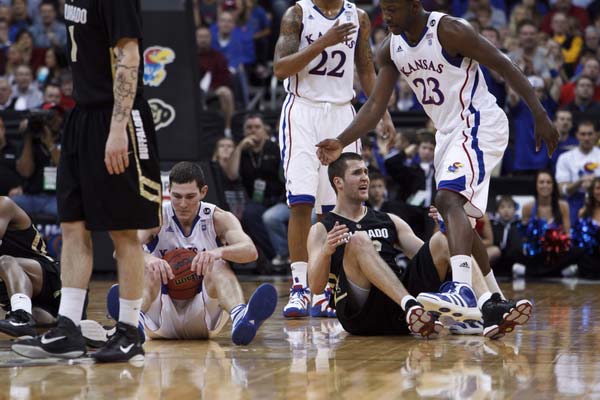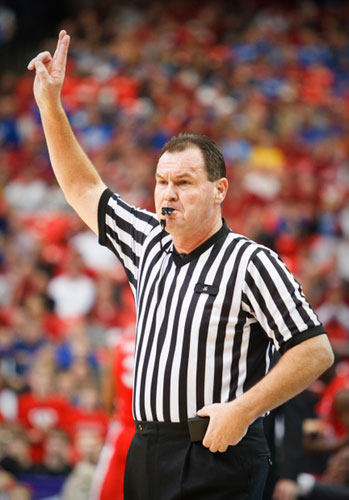Inventor of Basketball
Lots of fans know everything about the game today: the rules, the players, and the teams. Many of them keep abreast of basketball news each day on major sports networks and a few extremely attuned fans sometimes come dangerously close to becoming stalkers (no Best Sports Blog users of course). But how many fans actually know about basketball’s beginnings? When was it invented? How did it originate? How did it begin to grow initially and start becoming the sport that it is today?
The inventor of basketball is James Naismith. Naismith was born in Canada in 1861 but moved to the United States in his twenties after studying physical education in Montreal. He settled in Springfield, Massachussetts and, while trying to find a team sport that allowed for strenuous athletic activity, he invented the game of basketball.
The earliest version of basketball was very different than the sport we know today. The game was played nine-on-nine with a soccer ball and players tried to score on a pair of peach baskets. Their were virtually no rules so, seeing the game get out of hand, Naismith developed the Thirteen Rules:
- The ball may be thrown in any direction with one or both hands.
- The ball may be batted in any direction with one or both hands.
- Players are not allowed to run with the ball. The player must throw it from the spot on which he catches it, allowance to be made for a man running at good speed.
- The ball must be held in or between the hands; the arms or body must not be used for holding it.
- No shouldering, holding, striking, pushing, or tripping in any way of an opponent. The first infringement of this rule by any person shall count as a foul; the second shall disqualify him until the next basket is made or, if there was evident intent to injure the person, for the whole of the game. No substitution shall be allowed.
- A foul is striking at the ball with the fist, violation of rules three and four and such described in rule five
- If player makes three consecutive fouls, it shall count a goal for the opponents (consecutive means without the opponents in the mean time making a foul).
- A goal shall be made when the ball is thrown or batted from the grounds into the basket and stays there (without falling), providing those defending the goal do not touch or disturb the goal. If the ball rests on the edges, and the opponent moves the basket, it shall count as a goal.
- When the ball goes out of bounds, it shall be thrown into the field of play and played by the first person touching it. In case of dispute the umpire shall throw it straight into the field. The thrower-in is allowed five seconds. If he holds it longer, it shall go to the opponent. If any side persists in delaying the game, the umpire shall call a foul on that side.
- The umpire shall be the judge of the men and shall note the fouls and notify the referee when three consecutive fouls have been made. He shall have power to disqualify people according to Rule 5.
- The referee shall be judge of the ball and shall decide when the ball is in play, in bounds, to which side it belongs, and shall keep the time. He shall decide when a goal has been made and keep account of the baskets, with any other duties that are usually performed by a scorekeeper.
- The time shall be two fifteen-minute halves, with five minutes rest between.
- The side making the most points in that time is declared the winner.


As you can see, the inaugural thirteen rules proved the foundation of the game. Subsequent changes were made over the years but the fundamental nature and purpose of the game of basketball has changed little since its inception. However, some rules have indeed changed and new elements have been incorporated: the dribble did not exist in the original game and there was a jump ball after each basket. Now, the game is far more fast paced and athletic and every effort has been made to keep the game flowing at all times.
Naismith’s new game spread quickly and, by the late 1890s, college basketball programs were starting across the country. Naismith himself founded the basketball program at the University of Kansas and coached there for a decade. Perhaps Kansas’ enduring success has something to do with Naismith’s early presence?
Beginning in the early 1900s, Naismith began taking an active role in promoting the sport across the US and internationally. Several Midwestern schools founded basketball programs during this period and the nascent future Big Ten Conference began to form. He also promoted basketball internationally, particularly in Europe, and this led to its inclusion in the 1904 Olympics as a demonstration sport. Shortly before his death in 1939, basketball became a full-scale Olympic sport in 1936. By the late 1940s, professional basketball began to pick up serious steam and, strengthened by a growing college game, began to develop into the game of basketball that we know today.
What do you think?
We'd love to hear your comments and/or opinions. If you submit them here, other visitors can read them, rate them and comment on them. An e-mail address is not required.
From Inventor of Basketball to NCAA Basketball Blog | Sports Blog | NFL Football Blog | NCAA Football Blog | NFL Football Archives | College Football Archives | MLB Baseball Blog | College Baseball Blog | MLB Baseball Archives | NBA Basketball Blog | NBA Basketball Archives | NCAA Basketball Archives | Fantasy Football | Fantasy Basketball | Fantasy Baseball | Soccer Archives | Olympics Archives | Stupid Athletes Archives | Other Archives | Football Forum | Basketball Forum | Baseball Forum | NFL Football Store | NBA Basketball Store | MLB Baseball Store | NCAA Football Store | NCAA Basketball Store | NCAA Baseball Store | Fatheads | NFL Football Tickets | NBA Basketball Tickets | MLB Baseball Tickets | NCAA Football Tickets | NCAA Basketball Tickets | NCAA Baseball Tickets |
|
Hot Stores! |
 |
Hot Tickets! |
Subscribe To Blog
|
[?] Subscribe To This Site 




 |
Like This Page
Comments?
We are always very interested in reader comments about the site -- especially ideas about how to improve it.
New! Facebook Comments
Leave a comment about this article in the box below and share it with your Facebook friends.